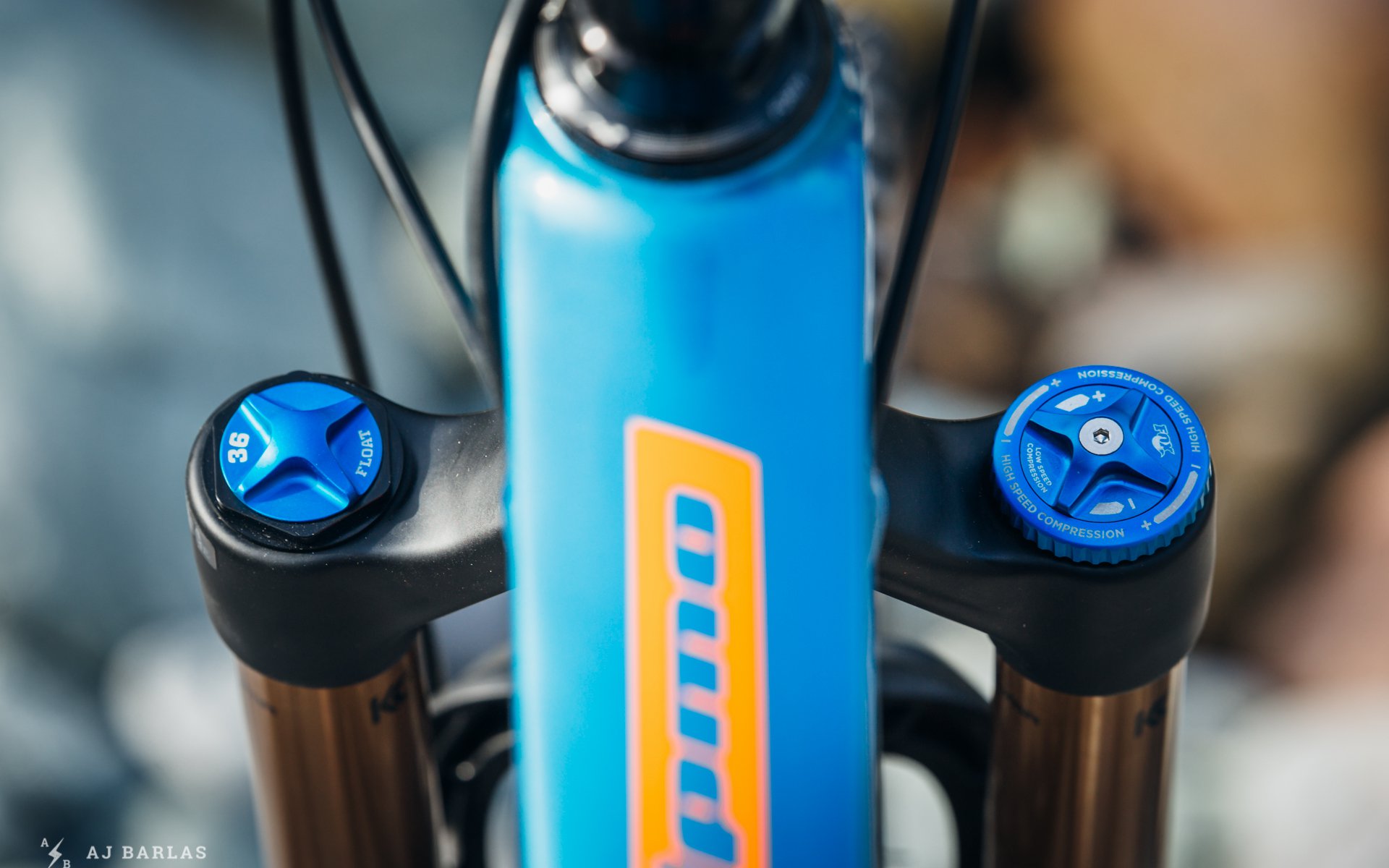
Five Interviews on the Topic
Short Fork Offset - What's It Good For?
Until recently, fork offset was something many riders didn’t consider when researching a new bike, fork, or geometry. That all changed in 2017 when Transition launched SBG (Speed Balance Geometry); an acronym that for the first time in the brands’ history wasn’t a piss-take of the commonly heard marketing jargon; an indication of how serious they were about their bikes updated geometry.
Transition isn’t the first brand to experiment outside of common offset and trail numbers. Chris Porter from GeoMetron and Mojo Suspension has been working with the concept for years and Whyte Bikes was also using it on prior models. However, Transition moving a large portion of the range to include the different geometry displays overwhelming confidence in the concept. They even requested suspension manufacturers build forks with the shorter offsets so that they could spec. the bikes accordingly.
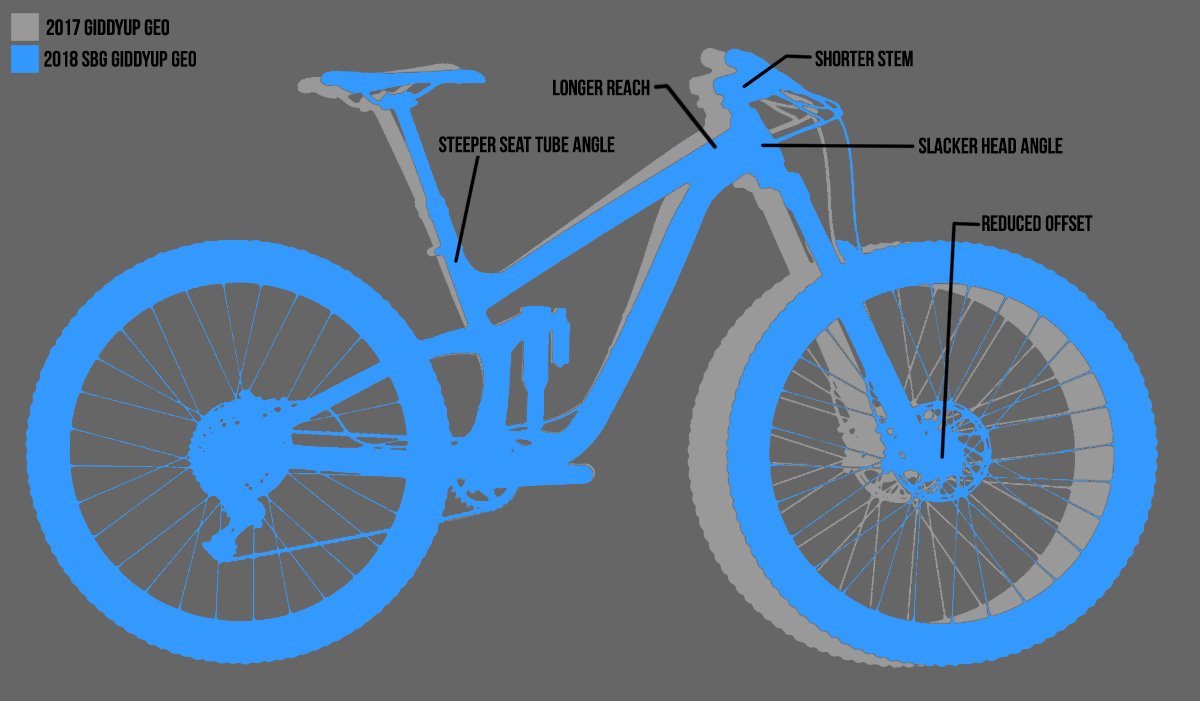
Transition Bikes illustration showing the changes to their bikes that include the shorter offset fork. Photo: Transition Bikes
What Does a Shorter Offset Accomplish?
Bikes with a longer front-center and a slacker head angle push the front wheel further away from the mass of the rider. Shorter offset helps balance handling characteristics to enable the bike to be ridden comfortably and quiets steering, helping stabilize the front wheel. When the head angle gets slacker, the trail is lengthened and wheel flop can make handling feel unstable, requiring more input from the rider. The shorter offset also brings the hub toward the rider’s mass making it easier to weight the wheel and provide steering stability.
Shortening the offset increases the trail measurement, which is also what a slacker head angle does. As you're about to read, some manufacturers are looking for that increased stability associated with a longer trail measurement, but without making their bikes much slacker. To do this they're shortening the offset and making less drastic changes to other geometry elements. If you are looking for more detail, Uncle Dave wrote a good piece on offset and trail.
Since Transition’s SBG was set loose, a number of brands have added a bike that includes a shorter offset. To name a few, Ibis, Specialized, and Orbea have released 29-inch wheeled models with 44mm offsets (a regular 29-inch fork offset is 51mm) and Specialized’s 27.5 Stumpy EVO has a 37mm offset as does the Transition Patrol and Scout (a regular 27.5-inch fork has a 44–46mm offset, depending on the brand). But it appears that for each bike released with a shorter offset, there’s a different take on its implementation.
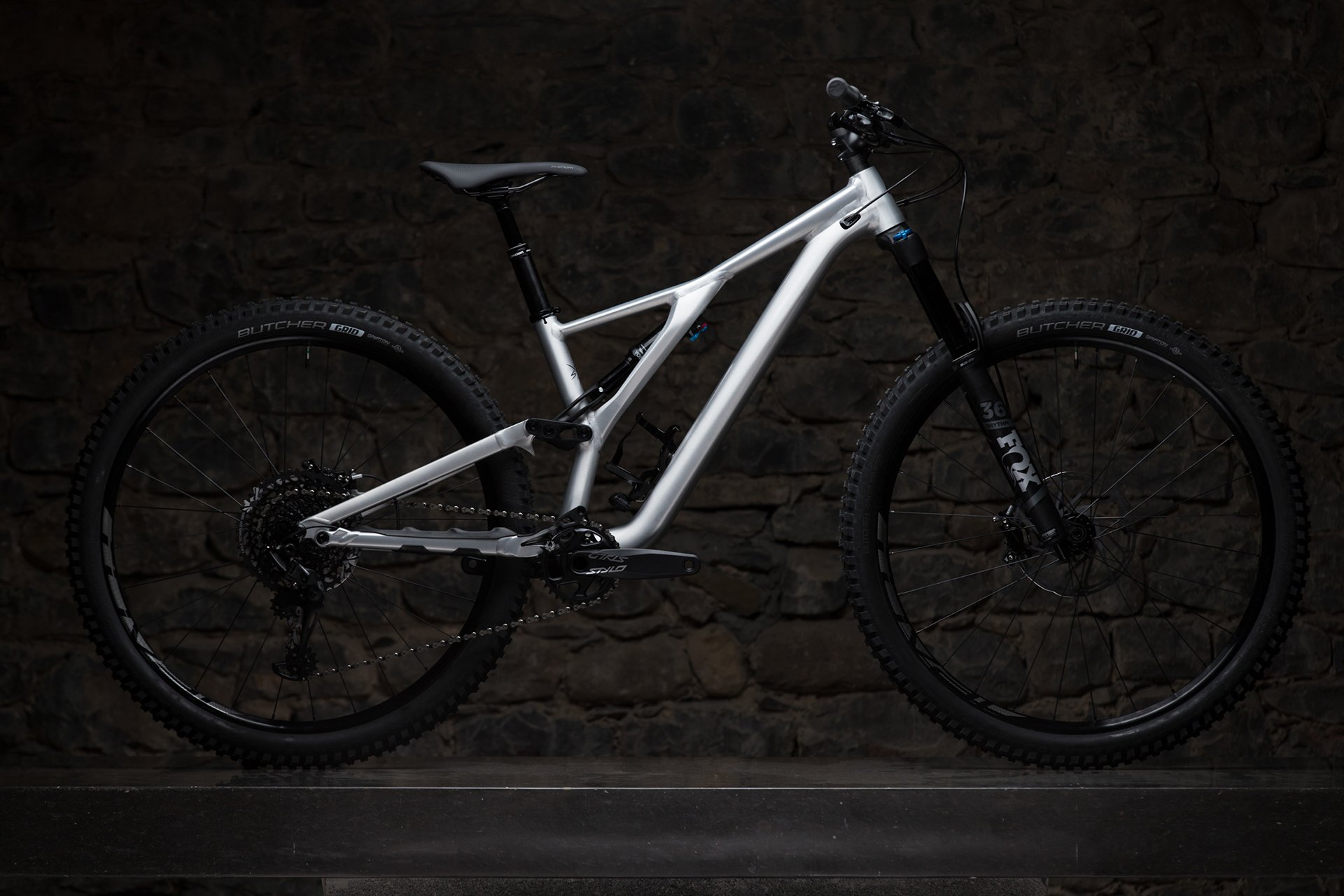
Specialized's new Stumpy Evo 29 will come with a 44mm fork offset. Photo: Harookz/Specialized
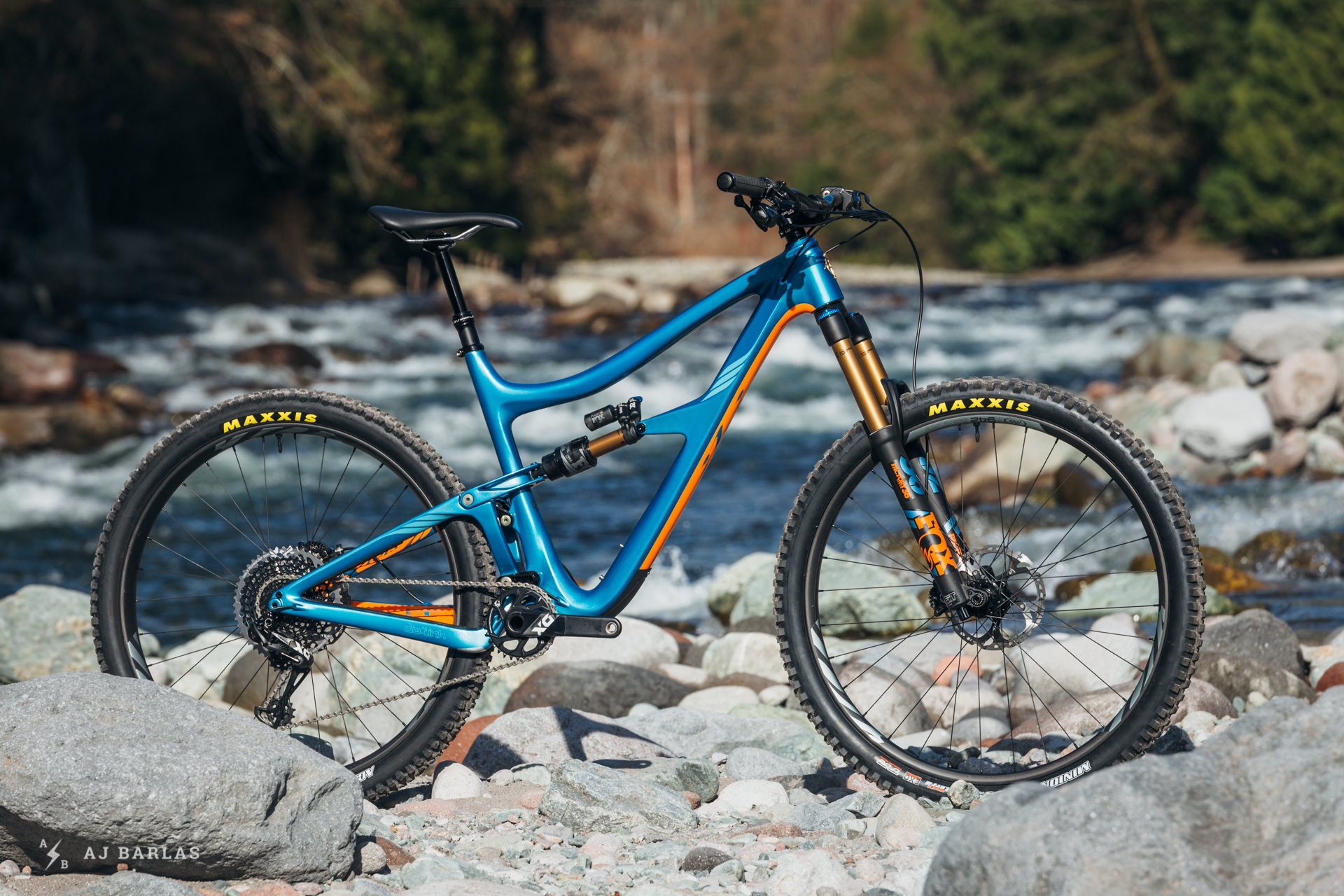
The Ibis Ripmo also features a shorter 44mm fork offset. Photo: AJ Barlas
When is a good time to select a fork with a shorter offset? Is it purely preference-based or are there potentially detrimental effects in some situations? I rounded up a number of engineers and product managers that have used the concept, plus a couple that haven’t yet to discover their thoughts on what might be considered the latest MTB fad. Each graciously providing their experience and insight by responding to four questions on the topic.
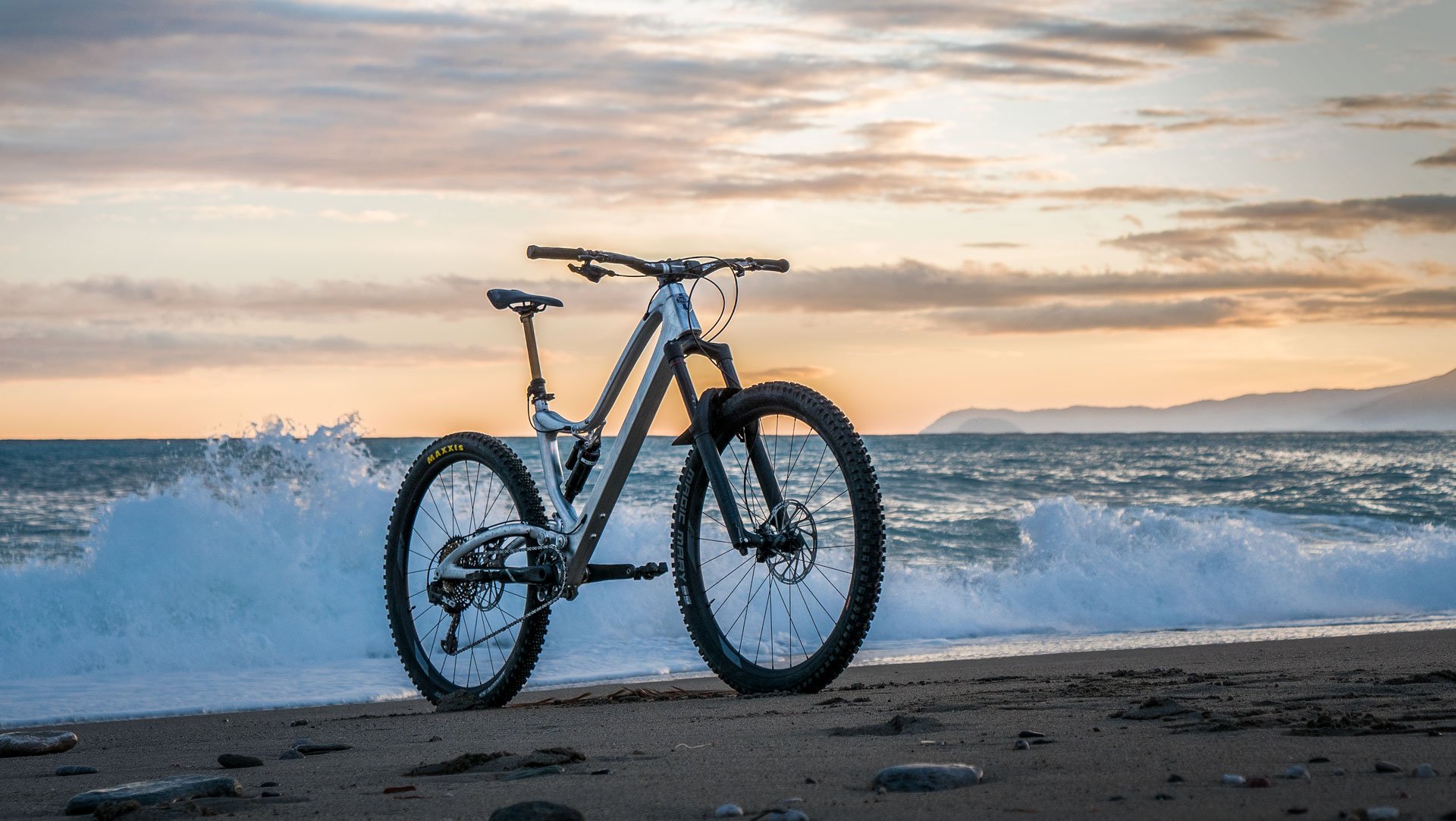
Spoiler alert: The Pole Machine doesn't have a shorter fork offset, despite its geometry. Leo rides, designs, test and owns Pole Bicycles. Photo: Pole Bicycles
Leo Kokkonen (Pole Bicycles)
Why do you think there's been a sudden increase in interest for shorter offset forks?
I think that because this is a technical article, we can talk straight. I believe that people are going for shorter offsets because of well-targeted marketing, of course. After all, MTB is a cool hobby and people are after the latest stuff that could make their ride more fun.
How would you determine the best use of a shorter offset fork? What parameters are involved when you consider making a shorter offset benefit the handling of a bike?
Recently I've tested the offsets that are available for 29" wheels. I think that 42mm is not very short compared to 51mm (meaning it doesn't make a large difference –Ed.). On our test rides and timed runs, nobody has been able to identify the shorter fork in a blind test. Everyone kept arriving at the same times on timed stages with both offsets. The fork offset is just a minor thing in the whole system which involves kinematics, suspension, anti-squat, overall geometry and personal setup (handlebar width, height, grips, crank length and pedals). What I think is that the fork offset makes 0.5% of the overall handling if we stay within reasonable values. Theoretically, shorter offset has less leverage from the front wheel to handlebars on tight and steep turns and could make the ride more comfortable there, but I think this is very minimal. If you are riding very steep stuff, I would go shorter offsets.
Have you found there to be any limitations with geometry and the use of shorter offset forks?
I don't think that there are any limitations within the range that we have access at the moment (37–51mm). I tested a really short offset. I flipped the fork crowns backward and changed the legs forward (reverse the fork so that air spring is on the right and damper is on the left on RS Lyrik) That's maybe too short ;)
Have you found it important to keep trail measurements similar to current bikes?
I think that measuring trail is not very important. More important is the head angle and overall rider weight balance on the bike. What I look at is the wheel flop (I call it the bite; the amount of drop the front gets when you turn the handlebars 90 degrees). More important is to test how the bike rides slow and fast as a system and how the steering handles when you tilt the bike and push it forward – does it fold or go straight.
Many marketers now refer to books that are written about motorcycles. The basic physics are right in the books but the relevance is hard to point out because bicycles are not the same machines as motorcycles. The mountain bike doesn't have a motor and the masses are different compared to motorcycles. Motorcycles are not ridden fast downhill, and they are not controlled entirely with brakes and body weight. When the motorcycle exits the corner, it usually throttles, where bicycles roll out or are pedalled out. What I think is that people aren't missing out on anything with "longer offsets." More importantly, we need to look at the bikes as a system, and the frame is the heart of the bike.
Luckily you can change your ride with different options and options are good. I encourage people to test different options. That's how I found my vision on the new school geometry.
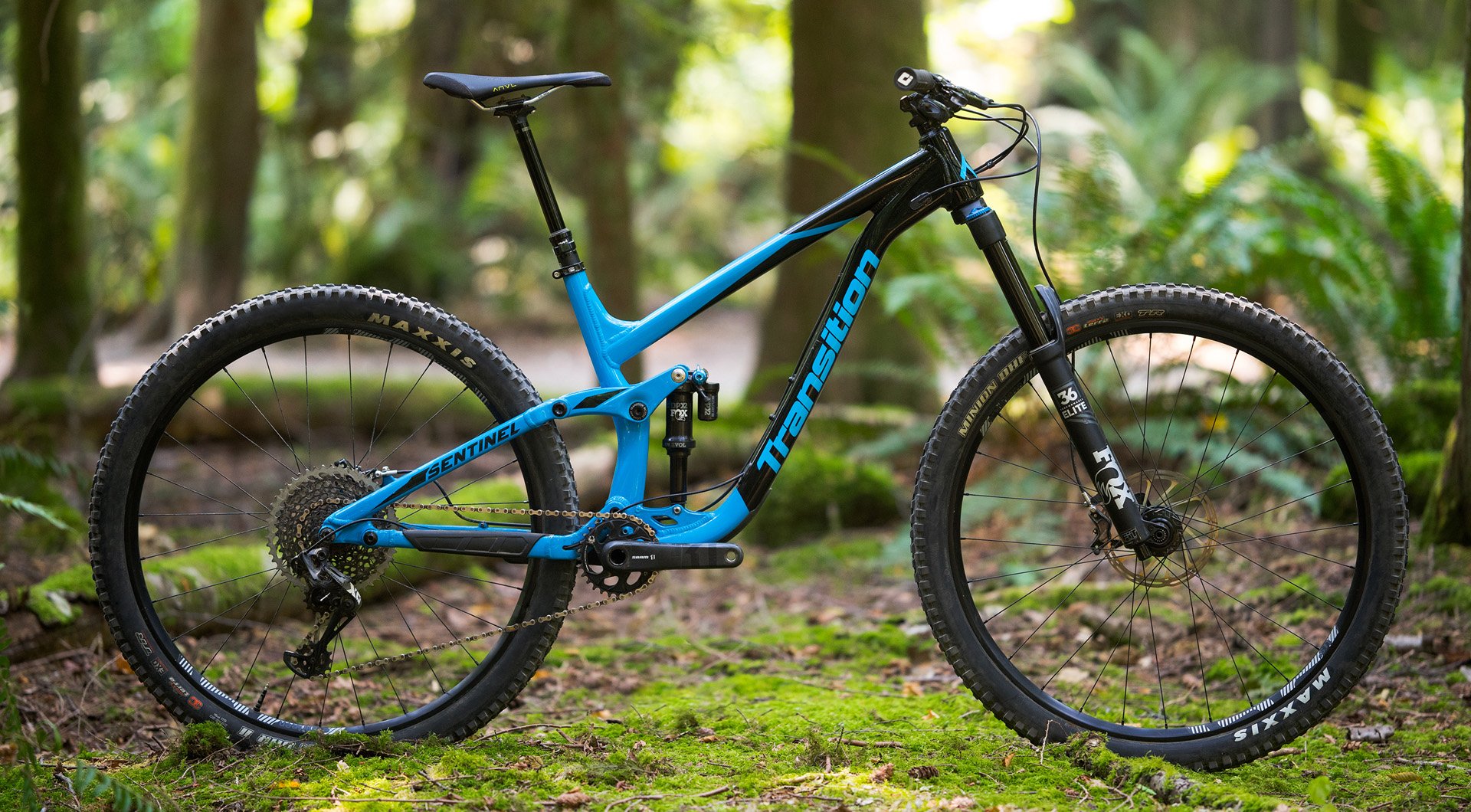
Transition's Sentinal. A long travel 29'er that launched their Speed Balance Geometry to the world. Lars was heavily involved with the development of SBG. Photo: Transition Bikes
Lars Sternberg (Transition Bikes)
Why do you think there's been a sudden increase in interest for shorter offset forks?
I can't speak for anyone else, but if I had to guess, it's because the fork models with shorter than 'normal' offsets became available. Before 2018 these weren't an option as an OE, and I can tell you it was quite the undertaking to bring them to market. The forks are simply being assembled with the CSU (fork crown) from the next wheel size down. So, short offset 29 forks use 27.5" CSU's, and short offset 27.5" forks use 26" CSU's. The 29" forks were relatively easy to produce as it just required the suspension manufactures to open new part numbers to have them assembled with the different parts. The 27.5" forks were more complicated as no one had produced 26" crowns in boost yet. Which meant the manufacturers had to open tooling for boost 26” crowns, which is not a small ask.
When we developed our SBG geometry system, we specifically requested these shorter offset forks with the intention to use them across our SBG bike range. In the early days, we were provided one-off forks to use for testing as they hadn't actually started production on the crowns yet. This allowed us to complete our testing, and gear up our 2018 bikes with the shorter offset forks earlier than most because we knew they were coming. The next reason I feel is that a brand (Transition) started to use these products heavily and this created some buzz, which in turn made other's feel like they needed to use it as well. Even while they might not have had time to test and understand the best application. You can see this industry-wide with the uptake of certain products. As a brand, part of your challenge is to stay relevant.
How would/did you determine the best use of a shorter offset fork? What parameters are involved when you consider making a shorter offset benefit the handling of a bike?
This question goes hand in hand with the next one, so I'll let question 3 take it.
Have you found there to be any limitations with geometry and the use of shorter offset forks?From my personal experience testing multiple ranges of headtube angles with different offset combinations, yes. I don't have any engineering or lab data to back this up, but I did systematically work through head tube angles of 66–62 degrees on a few 29 and 27.5 wheeled test mules, all paired with 51mm, 42/44mm, and 37mm offsets.
What I found is that if you go shorter on offset on a bike designed around a longer offset, and don't pair it with a slacker headtube angle of 1–2 degrees you tend to get a nervous feeling from the steering. The best way I can describe this is front wheel tuck. When you execute the turn, the sensation is that the front wheel want's to keep turning. A few other factors come into play here; how much you're leaning the bike, your stem length, the size of the frame etc... When you decrease the headtube angle and make it slacker without changing anything else this sensation is eliminated. There is some magic with this combination, and we are going to continue exploring.
We also experimented with additional changes like frame length, stem length, chainstay length and found what worked right for us. It's important to keep in mind that there is no absolute here, mountain bikes are a very dynamic vehicle and there's a lot more going on than just headtube angle and fork offset. But that is what we found through years of testing.
Have you found it important to keep trail measurements similar to current bikes?
Not necessarily. One of the first things I did to understand trail was based around a 2015 Patrol frame in size large. The Patrol has a 65-degree headtube angle, 160mm fork travel and is based around a 42/44mm fork offset depending on whether you have a RockShox or Fox fork. I had plenty of hours of experience on this bike with the stock setup so it was the perfect candidate.
The stock bike has trail dims of 116 to 119mm depending on setup. I installed a 1-degree Works angleset in it backwards which provided a 66-degree headtube angle, and installed a 160mm 37mm offset fork which has a trail dim of about 118mm.
It's important to note there was no gain in stack on the lower cup.
So right in the trail range of the stock bike and should have provided similar handling given the nearly identical trail figures. The bike rode differently, like, dramatically different. There was mega front wheel tuck, it was hard to lean the bike over, and overall it had a very nervous demeanour. So, if what we as makers of bikes should be focused on is the trail figure why didn't these two setup's ride the same? This was the first step in our exploration. And as I mentioned previously, there are other factors that come into play, but we're talking offset and headtube angle. Wheelsize certainly comes into play, and the larger the wheel diameter the less you need to compensate with headtube angle if you're changing offset the same as you would a smaller wheel size.
We're starting to see other brands adopt shorter offset's on their bikes and taking different geometry approaches. I'm in no way saying either one is right or wrong. These were simply some of our results which drove our direction, and ultimately what we feel works best.
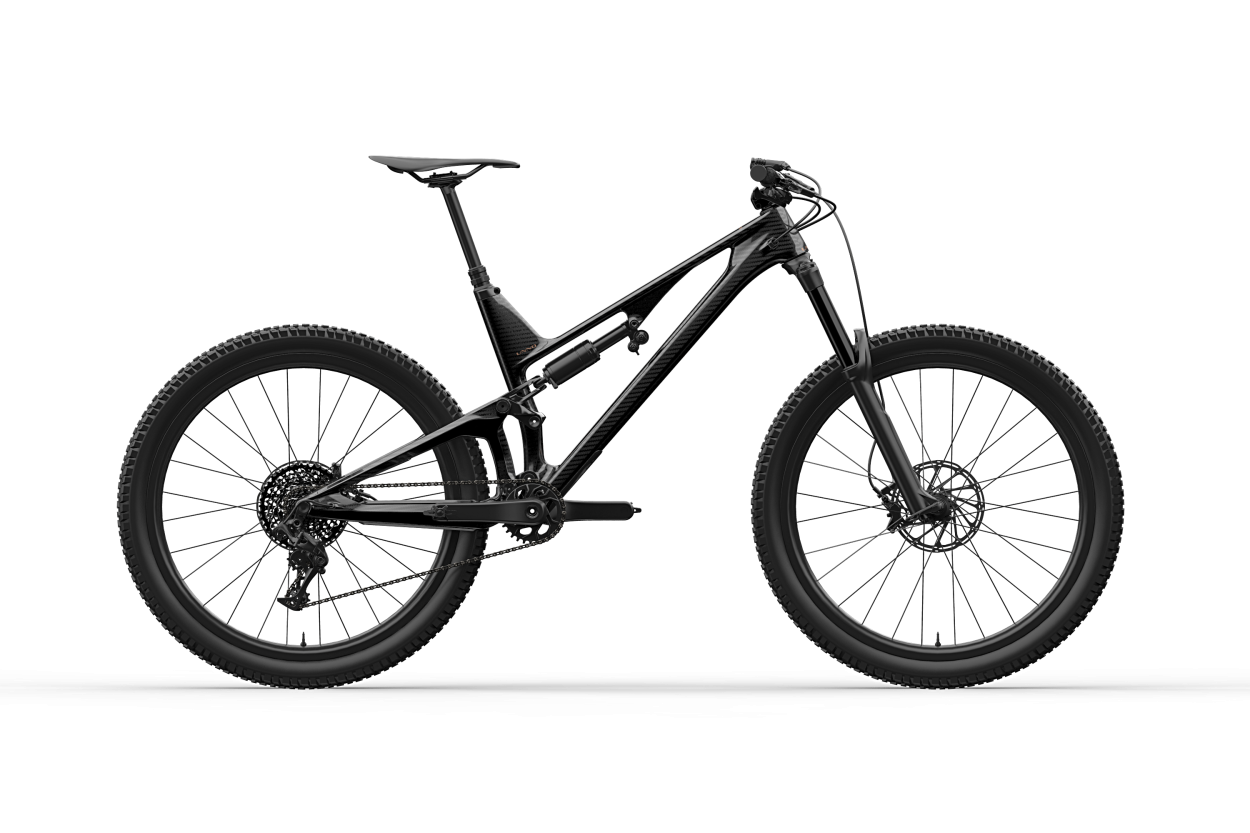
Unno is Cesar Rojo's exotic bike brand and the new Burn is their 160mm all-mountain weapon. Cesar also helped develop Mondraker's Forward Geometry. Photo: Unno Bikes
Cesar Rojo (Unno Bikes + Cero Design)
Why do you think there's been a sudden increase in interest for shorter offset forks?
Well, it's easy… With people realizing we need slacker geometries, making the bike too slack has downsides. The most important one is having the front wheel too far from your handlebars and not putting enough weight up front to turn, so reducing offset generates a similar effect without having to slacken the head angle.
How would you determine the best use of a shorter offset fork? What parameters are involved when you consider making a shorter offset benefit the handling of a bike?
Pretty much any bike right now will benefit from the shorter offset forks. Offset works with head angle and reach. These three things are very related and you can work them together, in duos, or individually, but it will take a pretty long explanation to go into details.
Have you found there to be any limitations with geometry and the use of shorter offset forks?
I haven’t experimented that much due to lack of options, we always specified, and we continue to specify, the shortest on the upcoming Unno full builds. Our bikes aren't super extreme slack and will benefit from it. This will definitely start killing a bit of those extreme head angle bikes as it will stop making any sense and require a lot of riding on top of the bars.
Have you found it important to keep trail measurements similar to current bikes?
Our bikes under the enduro category are slacker than the market (more trail), we always had our own testing and thinking, we really don't base decision on what others do. That is why I believe we have been involved in the most important changes in bicycle geometry in the last decade, with the slackened head angles and longer reach.
In the next years all category geometries should be as stable as it is in DH, the Summum appeared in 2010, and except reach, the other numbers are like any modern bike of today. A large Summum from 2010 could be pretty much any size medium bike from main manufacturers of 2019. Not many nine-year-old bikes can say they have an up to date geometry in mtb.
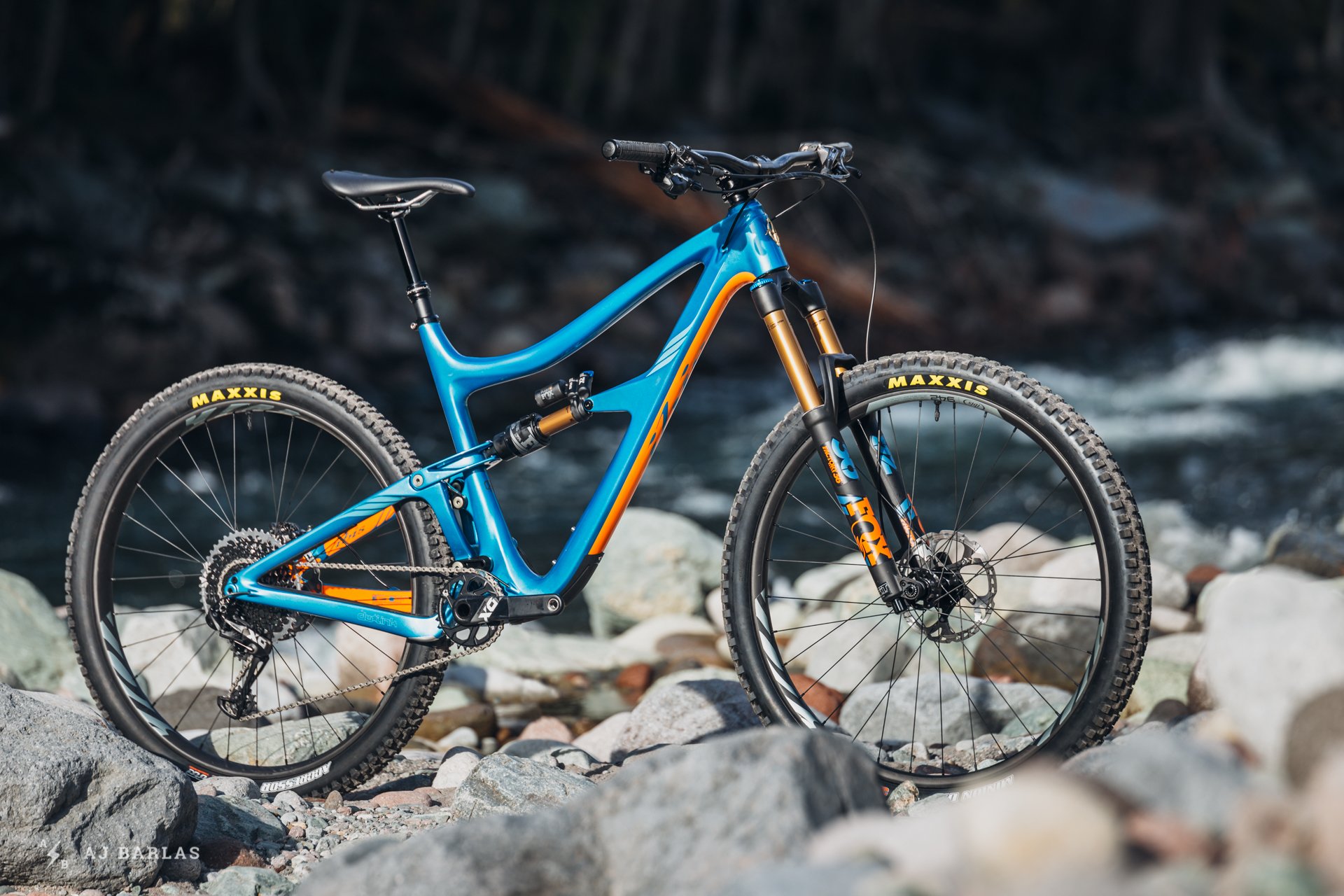
The Ibis Ripmo and its 44mm offset Fox 36. Colin Hughes is the engineering manager at Ibis. Photo: AJ Barlas
Colin Hughes (Ibis Cycles)
Why do you think there's been a sudden increase in interest for shorter offset forks?
As suspension has improved we've started going faster and that means we need more steering force to initiate turns and hold a line. The way to do that is to increase trail, the offset of the tire contact patch from the steering axis. The two ways to increase trail for a given wheel size are making the head angle slacker or reducing offset. By reducing offset instead of making the head angle slacker you keep the wheelbase shorter. Without the short offset, the Ripmo's head angle would have needed to be 64.5 to get the same trail. The downhillers would have been fine with that but it would have reduced the bike's versatility.
How would you determine the best use of a shorter offset fork? What parameters are involved when you consider making a shorter offset benefit the handling of a bike?
A shorter fork (offset) could be used anytime you want to make a bike feel more stable but it is going to add weight to the steering. The way to counteract the handling feeling too heavy is to make the seat angle steeper. That puts more weight on the bars, making them easier to turn.
Have you found there to be any limitations with geometry and the use of shorter offset forks?
You would not want to put a short offset fork on an XC bike where the wheelbase is already short because it's just going to pull the wheel back further. It's a trick for bikes that already have long wheelbases where you don't want make the head angle any slacker.
Have you found it important to keep trail measurements similar to current bikes?
The Ripmo's trail measurement is actually the same as the HD4's.
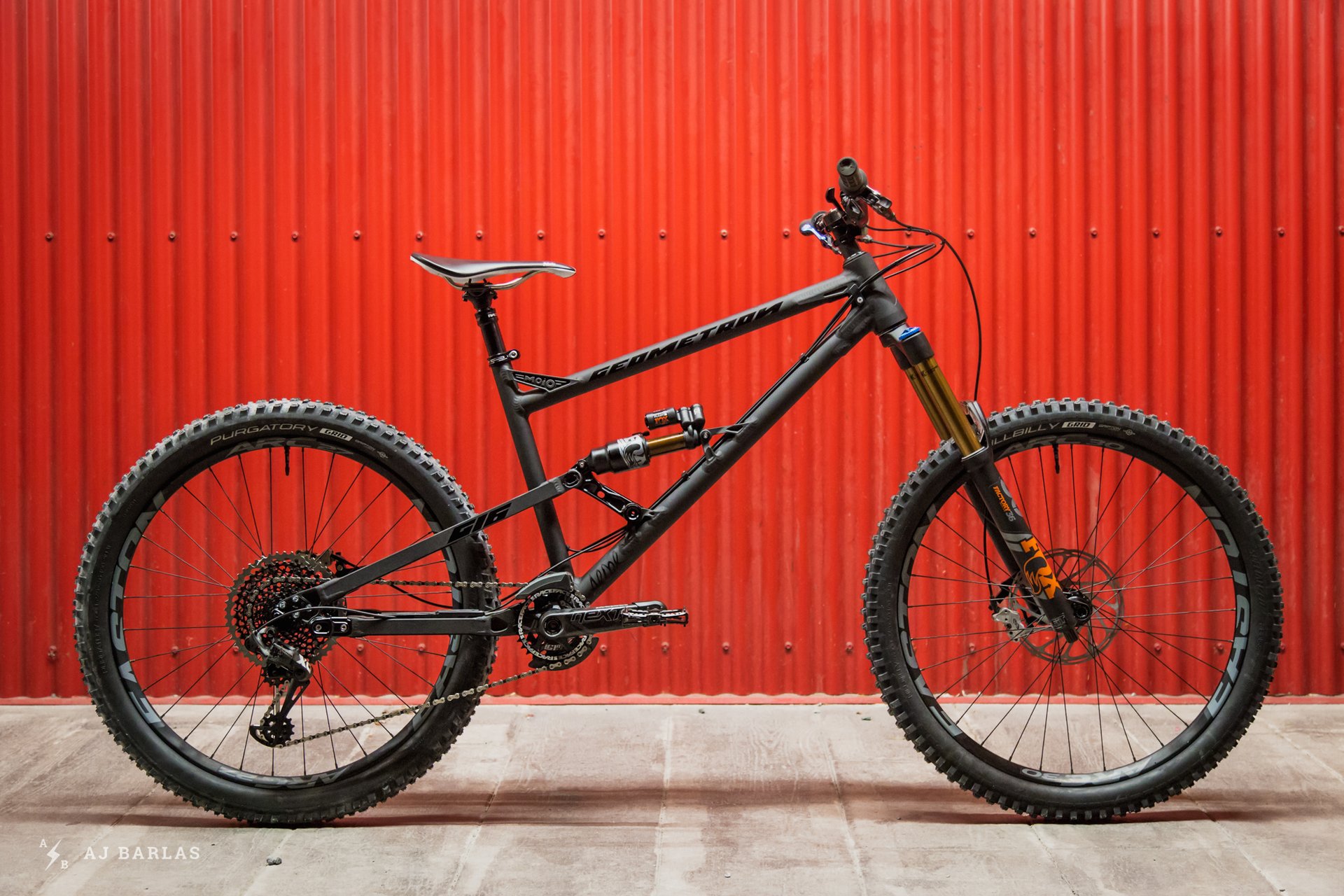
Chris Porter is the man behind GeoMetron bikes and has a wealth of experience on the subject of bike geometry. He also isn't affraid to do things different. Photo: AJ Barlas
Chris Porter* (GeoMetron Bikes + Mojo Suspension)
*Note: Chris opted to present his response as a complete piece rather than address the questions individually.
Without wanting to blow my own trumpet (as biologically impossible as that sounds ;-) I think the 'sudden' interest in shorter offset forks is down to what we have been doing at Mojo and GeoMetron. We've been selling shorter offset forks to customers since before we even did the article with Seb Stott on BikeRadar… It's not sudden, it's a process and an evolution in geometry to match the evolution in the way we ride bikes. We ride much tougher trails and we need bikes which are more stable in the steeper, rougher, faster sections…
In fact, I'd say the trails we are riding now on our trail bikes are generally tougher than the DH tracks of 10 years ago… Some of the recent EWS tracks have been OTT in terms of difficulty, they've gone so far they stopped actually even being 'fun'! ;-)
Now… We did the offset experiments as part of a combination of geometric variables and the shorter offset works well with a slack head angle. Head angle and offset both affect the trail but they both work different when leaned over…
The MTB manufacturers are all scared of head angle! So the 66-degree enduro bike needs a lot of settling down in rough trails. A single crown fork will also flex anywhere from a couple of degrees to 5 degrees under duress! So shorter offset is a way of compensating for that flex… So I think it's the MTB industry's way of getting stability without a slack head angle and without using dual crown forks.
You can't take one geometry parameter and say it helps with this that or the other handling trait or problem. Every single geometry parameter feeds into the next one. There is no-one in the bicycle industry clever enough to understand all of the ways they affect each other, there are infinite variables…
If HRC Honda and their (expensive) clever guys are still trying to understand why Yamaha can be faster than them at some tracks and slower at others there'll be no-one in the bicycle industry who can say for sure what does what and when! It's way too interlinked.
It is possible to go too far with offset. If you push it too far (increasing offset) it will only turn in a settled manner when on the brakes. If you reduce offset too much it becomes harder to turn on the brakes – too short and it just straightens up under deceleration. This is why head angle is important!
Trail is great and seems like a simple idea on a flat 2D piece of paper but like any other geometry component, it's only a starting point. Lean the 2D paper thing over with a 2.4 tyre with 23psi and knobbles and add a camber or a slope, some suspension sag and a bit of fork flex and we run out of computing power to calculate trail… It’s all about the feel!
It must be done by rider feel.
However… If you are buying bikes by 'mould' from a 'vendor' who is already busy, how do you experiment with all the geometry components? The simple answer is, you wait for someone else to do it and get praised by the journalists, then you get your marketing men to attempt to convoke your potential customers it was your idea all along!
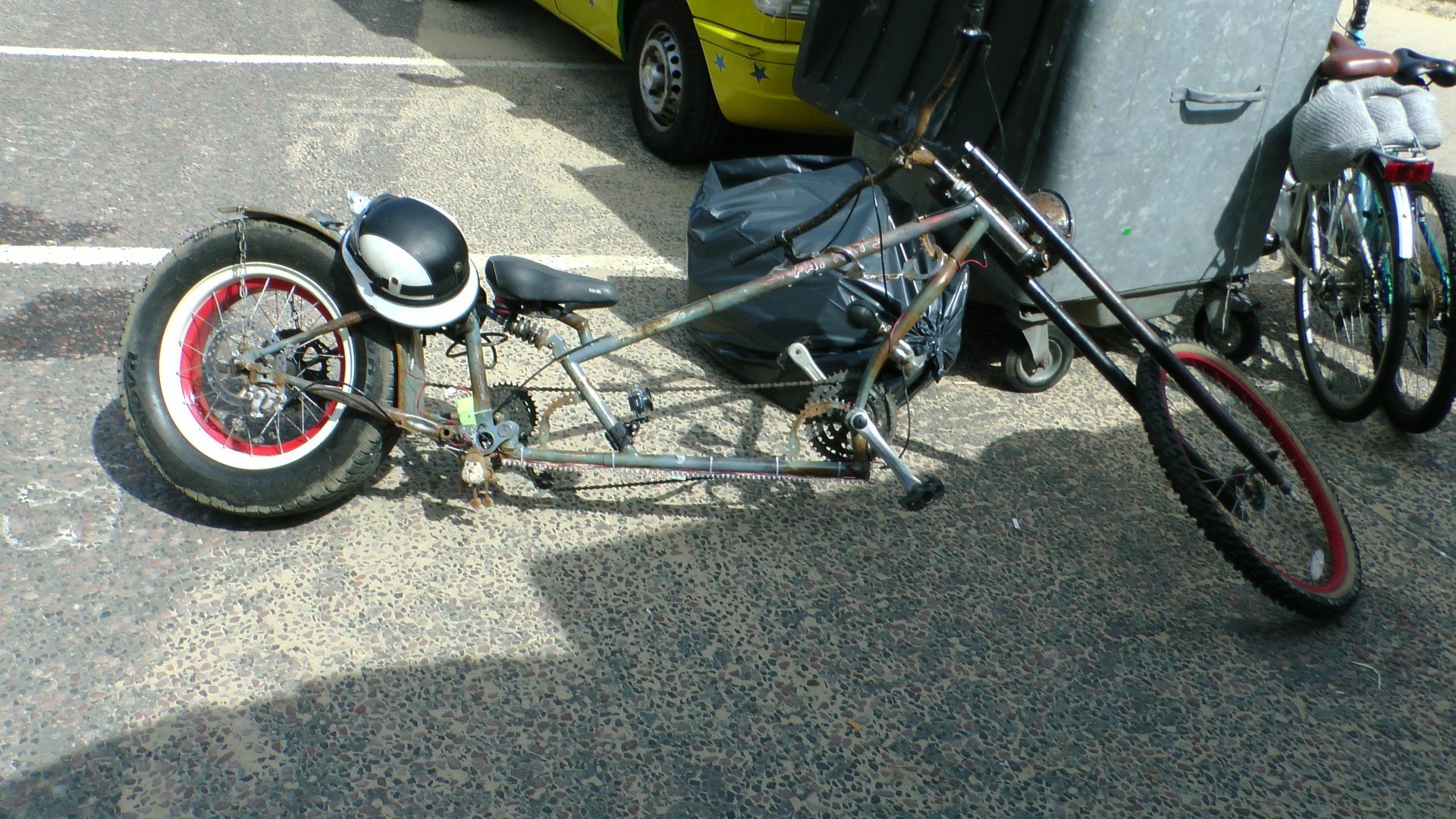
Would shorter fork offset improve the handling of this weapon? Maybe it already has a shorter one… Photo: Google Images
Observations
I was honestly hoping to discover some magical unicorn that showed everyone was leaning toward one common goal, and “X” was the way to do it… I should have known better. What’s clear is that, like life, the use of fork offset isn’t black and white. There are two distinct trains of thought, (at least from those included here) leaving riders with options.
One camp focuses on offset to achieve trail dimensions similar to those arrived at with a slacker head angle. They seek the same benefits — increased stability — but don’t want to decrease their bikes' head angles, in turn lengthening the wheelbase. The other camp believes that to benefit the rider, a shorter offset is best used in conjunction with longer reach numbers and slacker head angles, plus other amends like seat tube angle, stem length etc.
Is decreased headangle such a bad thing? On its own, perhaps. In my experience, it's not bad when considering the entire package, even on the slow janky trails easily found in my local area. Is shorter trail with a less extreme take on reach and headangle a solution for those concerned with longer wheelbases and slacker bikes? Sure, maybe.
Which leads us back to the individual. Riders have options like never before. Get out there and test as many different bikes as possible. Swap with your friend riding that "wild" looking beast. Do whatever it takes but don't discount one philosophy without having given it a fair go first.







Comments
tashi
5 years, 10 months ago
I find it interesting that the company that doesn't go for the short offset (Pole) talked entirely about technical stuff while the companies that have chased/pushed it make sure to focus on what it means for their brand and it's position in the market.
Reply
Justin White
5 years, 10 months ago
Ibis went technical, too: Shorter offset equals longer trail without the longer wheelbase of a slacker head angle.
So you get the some of the steering stability at speed from the longer trail, and maintain some of steering quickness at lower speeds from the shorter wheelbase.
Reply
Greg_M
5 years, 10 months ago
This comment has been removed.
Andrew Major
5 years, 10 months ago
It's interesting, from the perspective of descending, that WC DH racers are running up to 58mm offset on their 29'er DH bikes. Just in terms of riders for whom a couple hairs of a second actually matter/is noticeable.
Wheelbase is the new HTA and all, and DH bikes are looooong, which may also be why Pole (big WB) is 0FG about offset.
I've experimented with 46mm, 51mm, and 55mm on the same (hardtail) bike, with the same cockpit, and it makes a notable difference for the first five minutes of riding until I'm used to it and then I can point out where one is advantageous over the other in certain situations if I absolutely have to - but really whichever fork was the most recently serviced would be my first choice.
I'm with Clark Gable (PVD) on this one - front center, HTA, and wheelbase are way bigger factors.
Reply
Tjaard Breeuwer
5 years, 7 months ago
“front center, HTA, and wheelbase are way bigger factors”
Except that fork offset influences those numbers too.
Reply
T-mack
5 years, 10 months ago
I find it hilarious how the masses would rather have a water bottle first and suspension design come second but something small like fork offset is a huge deal.
Reply
Vik Banerjee
5 years, 10 months ago
It's not a zero sum game. You can have top notch suspension performance and a water bottle in your frame and whatever fork offset you want.
Reply
hongeorge
5 years, 10 months ago
Interesting. I originally built my Geometron with a reguar 27.5 Fox 36 with regular offset, but after a good few months riding, I managed to gouge the stanchions on a rock. Mojo replaced them for me with a shorter offset 26" CSU (which was cheaper too, nice one).
I'm probably not a good enough rider to understand or describe exactly what difference it made, but there was definitely something. The bike cornered better, both tight lines and when leaning it at speed.
Reply
Velocipedestrian
5 years, 10 months ago
I've made this comment on a previous article, but it's relevant here, so...
I've switched from a 40mm offset to a 44mm, then gone back and realised how much better the shorter one was. This is entirely based on rider feel and no engineering, but a-c length and travel stayed constant, the only other change was coil-air-coil and while this has an effect on suspension performance, it shouldn't change steering behavior.
Feel free to discount my opinion based on being a 26" luddite, or any other reason really, but to me the shorter offset was a real winner.
Reply
T-mack
5 years, 10 months ago
This is what Its all about:
Imagine you're Sam Hill and you're going to race the EWS in Whistler. Do you want a stable at high speed front end or twitchy tight turning front end? Probably stable at high speed so you tell Sram you want the 37mm offset fork. Now you have to race France or something that's super tight with lots of switchbacks, go with the 44mm. Now the general public isn' going to buy 2 forks for each race so you run what you think you'l be most comfortable on most of the time. All of this BS about bikes being built around the offset is marketing.
Reply
Tehllama42
5 years, 9 months ago
I think you could argue that he'd run the 37mm all the time, and just hustle it harder where needed - consistent equipment is probably worth more than such a small marginal difference.
Reply
Nouseforaname
5 years, 10 months ago
Every time there's one of these "let's see bike companies justify their marketing" segments, I scroll down hoping for a real dissenting voice. This one did OK - Leo K is pretty on point IMO. I'm really hoping one day that you get PVD on the mic.
Edit: haha NVM I see he got at you on Facebook!
Reply
Justin White
5 years, 10 months ago
The Transition talk seems the most marketing BS to me, since they did most of SBG around 2015 or 2016: longer reach & wheelbase, shorter stem, slacker head, steeper seat. Then in 2018 they added shorter offset, probably to make up for the enormous wheelbase, and called it "all new SBG".
They were at/near the front of the long reach plus steep seat angle movement, but kind of jumped the marketing shark with SBG, IMO.
I see a lot of mentions that say slack head angle increases trail, and too much is trail bad (floppy, slow steering), and then immediately say that less offset also increases trail, but it's now a good thing... So, reduced offset also increases trail, but somehow doesn't have the same negatives of increased trail from slacker head angle? Doesn't make sense without mention wheelbase, and especially Front-center.
If course that test bike with the angle-set steepened head angle and super short offset fork has big time wheel tuck: the front center is probably 25-30mm shorter than normal. That's kinda like going from a 50mm stem to an 80mm stem, with would pretty much be blasphemy, and of course would make it feel like the front wheel was way too close underneath the rider.
Reply
awesterner
5 years, 10 months ago
The Sentinel doesn't have floppy steering at all. Zero flop, zero lift and wandering on steep switchback corners. It's a Slack AF bike that noodles up hill very well. It's a 64 degree HA bike that is very reasonable to ride All Mountain.
Sure maybe the numbers don't make sense on a beer coaster, but they just work. Lars isn't an engineer but apparently he has a good sense of what works. Same with Chris Porter. And it really does beg the question....if it's a rider feel thing, who's opinion carries more weight, shredder 'market manager' or engineers? There is a whole lot of blind trust in engineers in the bike industry. I know in Aerospace it's a daily struggle for our engineers to see the forest for the trees!
Dollars to donuts Pole will have a short offset in the future. Just like the onset of 27.5 wheels.....all the early critique ends with.....;-)
Reply
Andrew Major
5 years, 10 months ago
“Just like the onset of 27.5 wheels.....all the early critique ends with.....;-)”
It makes no real difference compared to the slightly smaller radius of 26” but if you can’t beat ‘em join ‘em?
That’s a hilariously on point piss-take on the offset wars!
Reply
[user profile deleted]
5 years, 10 months ago
This comment has been removed.
Brad_xyz
5 years, 10 months ago
Here's my 2 cents from recently trying a new 2019 Rockshox Lyrik RC2 27.5" 170mm fork with reduced offset (37mm) on my 'new to me' bike build for a couple rides. To me it mainly feels as if someone put a damper on the steering column. Some people will like the extra stability and the ability / necessity of steering using more body weight shifts (feels a little more like carving your turns) rather than just turning the bars while others will feel as if it is 'overdamped' and too sluggish because the steering feels less sharp and reactive to bar input.
The one thing that I'm still interested in exploring more is that to me the biggest benefit in the reduced offset seem to be when I was on steep tight corners while on the brakes at stall speeds; in this situation it seemed as if the steering was easier to control and less likely to tuck in and flop 90 degrees to the side. If I was not making up this feeling then for me this might be the single biggest benefit.
On a side note: If anyone is interested I've got this practically brand new fork for sale on PB at around $200 off the new price because I decided I missed having a 29er fork and wheel on the front of my new bike like I had on my old bike so I've got my old 29er fork back in front on the new bike. To me having a 29er front and 27.5 rear is really the next big thing for anyone who rides steep and technical and this makes a way bigger difference than a little bit of fork offset. Having the same size wheels front and back just feels super sketchy on steep terrain after you get use to riding this way. Each to their own I guess :)
Reply
Endur-Bro
5 years, 10 months ago
MOJO has really been pushing the 275 rear/29 fork setup for some time. I'd be interested in giving it a go sometime.
Reply
Brad_xyz
5 years, 8 months ago
Having now ridden and compared a couple 27.5" and 29" forks for a longer period of time, I'd like to add a few observations if anyone ever comes back to this article. The bottom line is that I have really drunk the Kool-aid on Transition's SBG setup. Here are my observations / opinions:
Shorter Offset increases trail just like a slacker head angle does BUT it does not have exactly the same effect on handling, especially at low speed because it also reduces the torque / force / lever arm applied to the handle bars around the steering axis. What that means is that you get all the same things that more trail normally causes like high speed stability and more wheel flop (which means it is easier to turn using weight shifts rather than just turning the bars). However, it also takes less force to turn the wheel or keep it straight, especially as slower speeds. This is why one of the ingredients of Transition's SBG setup is a very slack head angle to start with. If your head angle is not slack enough and you put a short offset fork on the bike, it can feel twitchy, especially at low speeds.
One huge advantage of this reduced leverage caused by the reduced offset is that when you have a slack head angle it is still very easy to control the front wheel on very steep and slow technical terrain. Have you ever had your front wheel flop to full lock because you applied the front brakes while trying to turn on a steep, descending, rocky corner? (Spoiler alert: I have far too often until I learned better). Reduced offset means that it takes much less force to control the wheel flop in this kind of situation, making these sorts of maneuvers much less sketchy feeling. On the flip side, at high speed this reduced leverage also makes it easier to control front wheel deflection due to hitting roots and rocks, and it still allows you to overcome the inherent stability caused by the larger amount of trail when you do need to turn.
While some people may not like the feel of the reduced offset, and it may not work well on a bike that has a head angle steeper than 65 degrees, I think it is the ideal setup for an all mountain / enduro bike in the Pacific North West, both for steep, slow tech and high speed bike park riding.
Reply
AJ Barlas
5 years, 8 months ago
Great observations Brad! Stoked you've been able to properly test it and I agree wholeheartedly with your findings!
Reply
NastyNick
5 years, 7 months ago
So you ditched the mix wheel size thing?
Reply
Brad_xyz
5 years, 7 months ago
Nope, I combined the mixed wheel size with a short offset 29er fork in the front. For me that is the optimal setup because the 160mm 29er fork slackens my bike out to around a 63.5 degree head angle but the shorter offset makes it still handle well in low speed tech.
Reply
NastyNick
5 years, 7 months ago
Glad you’re still into it. I’m about to try the same thing with a 27.5 wheel in the back of a 29er trail bike. Should work well on the bike I selected (high bb and steap sta). Stoked!
Reply
Tehllama42
5 years, 9 months ago
Well, I feel bad for accidentally being on this hype train for years. 46mm 29er offset at 66.5 degrees on long-ish travel 29ers was a cost decision for me ($400 OEM Pike in 2014 is hard to resist).
I get that bikes are always a compromise, but as a bigger rider I've never felt that I'm too stable on anything south of 35lb and 50" wheelbase... I just wish I could borrow the ear of a product manager for long enough to try out something genuinely crazy with some of the rest of the component spec. I'm not that great a rider, but I do know precisely what I want it to handle like, who knows.
Reply
NastyNick
5 years, 7 months ago
Interestingly Pole now has the evolink 158 listed at 42mm offset on their store page.
Reply
LewisQC
4 years ago
This comment has been removed.
Andrew Major
7 months ago
Apologies I missed this. There's optimum, and then there's humans' ability to adapt. I would have said she'd be fine with the shorter offset fork having run back-to-back-to-back testing on the same bikes with 55mm, 51mm, and 44mm.
I'd be curious what avenue you went.
Reply
Greg_M
5 years, 10 months ago
Nice work AJ!
Interesting to read the different perspectives and thoughts on what offset does and when it's a good option. It's unfortunate that the way to experiment on your own bike is via a new CSU or complete new fork though.
Reply
AJ Barlas
5 years, 10 months ago
Cheers, Greg. It's certainly an expensive one to test on your current bike. Imagine how sick it would be if retailers were to offer a number of forks with the different offsets to test! That would be a cool demo program and give lots of customers some great insights.
Reply
boomforeal
5 years, 10 months ago
This comment has been removed.
GT dad
5 years, 10 months ago
Ive been riding my custom built "franken bike B6er" a 26rear /650 front wheel 1st gen slopestyle team edition GT Distortion 26er with a 2012 26er 36 fox float kashima 140mm fork (with 37mm offset)for 4 years now with a 650B front wheel (yes it fits fine) funny how this "newly" spot lighted spec is suddenly a big deal. It sits with 65" head angle but is still good in tight turns. However slap a 26 on the front bike feels like a BMX so much more playful..
Reply
Niels van Kampenhout
5 years, 10 months ago
It would have been interesting to also ask the opinion of those who went in the opposite direction (longer offset): Giant, YT, I think even Specialized not so long ago?
The fact that we are seeing both longer and shorter offsets specced probably means the difference on the trail is not really significant for most of us.
Reply
Nouseforaname
5 years, 10 months ago
Exactly, it's a bit like a justification bias. "My new bike feels amazing - so much faster and more stable but still poppy and nimble". Is that the reduction in fork offset by 7mm or the fact that you now have a new bike?
Reply
bmak
5 years, 10 months ago
Agreed. I have one of the Reigns with the longer offset fork and I can't say I have noticed any difference that I could attribute to offset...
Reply
AJ Barlas
5 years, 10 months ago
Specialized was asked for comment but were unable to spare the time. A couple of others were too. Everyone is really busy making bikes, so I really appreciate those that took the time to chime in.
The bikes that went in the opposite direction previously had different geometry to what we're heading for now. Things are changing at an alarming pace at the moment and that's resulting in brands switching up what they are doing in many regards concerning bike handling. Specialized, as one example, is now using a shorter offset on their new Stumpy EVO, which pushes things pretty far compared to the norm, and it rides great.
Reply
Henry Chinaski
5 years, 10 months ago
I don’t think that’s the right takeaway. The companies that are advocating for shorter offsets here think they work better for their respective bike geometries. Read Lars’ entry again. For the bikes Transition has designed, that’s not the sound of a guy that thinks that decreased offset (and the resulting trail figure) is “not really significant”. I’m building a Geometron and I purchased a short offset fork, mostly because Chris Porter has forgotten more about bikes this week than I have rolodexed. Will I notice the fork offset nearly as much as moving from a 480mm reach to 535? Likely not. If I were buying a YT I probably wouldn't have made the same decision. I had a choice, and that’s a good thing.
Reply
Niels van Kampenhout
5 years, 10 months ago
"The companies that are advocating for shorter offsets here think they work better for their respective bike geometries."
Of course they do. And the companies that spec longer offset forks presumably think they work better for their respective geometries?
Not saying any of them are wrong. Just observing that apparently bike designers' opinions on this are all over the place and still all their bikes are riding really well. I think bikes are so good already that bike companies must turn to minor details to distinguish their brand.
Reply
Cr4w
5 years, 10 months ago
I'm riding a Sentinel now with the 44mm offset fork. It rides really well and so far I'm happy even though it's not quite big enough for me. It's super fun to ride, best cornering bike I've ever ridden. It's visually weird to see the front axle so far out front but it tracks great while climbing. I'm still trying to understand what's caused by the seat angle vs reach vs stack vs heat tube angle versus offset but it's interesting for sure.
Reply
[user profile deleted]
5 years, 10 months ago
This comment has been removed.
Endur-Bro
5 years, 10 months ago
What type of fork is on it?
Reply
Cee Cee
5 years, 10 months ago
Jeffsy 29 had a 44mm fork in 2017--it's on the Fox-equipped bikes now. I don't think they market it at all. For aggressive cornering, it's better, due to relative ease of countersteering. Shorter stems and bigger wheels make it all the more desireable. Is it worth buying a new CSU? No. Is it worth looking for if buying a new fork or bike anyway? Yes. Fox has had 44 and 51mm options on 32 Float 29s for at least a couple of years now. Don't be surprised if all the 29" forks are 44mm soon enough.
Reply
Endur-Bro
5 years, 10 months ago
I'm currently debating between 42,44 and 46mm offset 29er fork. Currently using a 51mm offset as that's what I had laying around.
Seems to be a larger issue getting the proper fork from a CDN Distro. But thats another comment for another article.
Reply
Andrew Major
5 years, 10 months ago
SKU Proliferation is a disease on the bike industry that has an immeasurable impact on the cost of bicycles and components.
For example, just warehousing the number of SKUs of Minion DHF tires now (26, 27, 27+, 29, 29+ X multiple tires in each wheel size) most certainly adds dollars, if not tens of dollars, to the cost of a tire compared to a decade ago - never mind manufacturing and to some extent marketing them all.
The worst part is it's pay now AND pay later.
More expensive parts up front in order to produce all the consumer choice - for example: four 29'er offset options that don't really matter - and then way worse support on the tail end as the number of SKUs make it overwhelming for brands to support their legacy product.
Reply
Cee Cee
5 years, 10 months ago
Would you like your DHFs in 27.5/2.5WT or 27.5/2.6?--the 2.5 is heavier--severe first-world problem.
Reply
Endur-Bro
5 years, 10 months ago
I get what your saying but literally *** needs to install a 650b CSU into 29er lowers.
Reply
Tjaard Breeuwer
5 years, 7 months ago
I think everyone can agree that the exact steering effects are very hard to predict.
The part I believe is easier to understand is wheelbase, front center length, and weight distribution.
For tall people like me, a short offset and not to slack head angle can help keep all those in check.
If you are riding a very small bike, a big offset and slack head angle can help optimize those.
Reply
Tjaard Breeuwer
5 years, 7 months ago
When I switched to a new bike with a much shorter offset (51mm -> 37mm, same wheel size), I noticed that it felt “lighter and livelier” to turn the bars, which was useful at slow speeds, but at the same time the higher trail and flop made it lean into turns smoother at high speeds.
It’s a strange feeling and hard to describe.
I would love to test with an angleset and swapping out forks to do back to back runs.
Reply
Tjaard Breeuwer
7 months ago
Well, I finally have a set up to test with:
160mm travel, fox 36 forks.
10 mm crown race spacer on the 44mm offset fork
Nothing on the 37 mm offset fork.
Headangle is about 1 degeee steeper with the short offset and spacer removed.
Trail is near identical, flop is a tiny bit less on the short offset fork.
Front center is 20 mm shorter.
I have not done back to back lift served runs yet, but in general it feels the same most of the time. Easier to make tight uphill switchbacks.
Reply
Andrew Major
7 months ago
Interesting that it feels that similar despite the FC being 2cm shorter. Curious to hear the update once you have some back-to-back downhill comparisons.
Thanks for sharing!
Reply
LewisQC
7 months ago
Hi! Andrew. Thanks for your reply on my question about fork offset for my daughter's bike. I think I accidentally deleted my comment so I'll respond here. For the Commencal Meta HT, I found a Lyric 150mm with 51mm offset. She rapidly outgrew this bike but for what I can tell the handling was fine. Pretty stiff frame though
I sold the frame and move the parts to a Canfield Purple Haze Yelli Screamy large frame and change the travel of the Lyric to 130mm. Gorgeous bike, almost fits me so I rode it a bit. It's like a big BMX with short chain stay. Handling is fine but the stearer was a bit short so I would need more stack (spacers on another fork) to ride it confortably. I have a Canfield Nimble 9 XL with a Lyric Ultimate offset 46mm I think. Really like the handling of this bike. Rode it at 160, now 140mm.
Anyway, my daughter is really cautious and don't like to ride that much so I might sell her bike. My 6'4'' 14 YO son is ripping Quebec City area trails on his Ripmo AF XL so 1 kid out of 2 in mtb is ok!!
Reply
Andrew Major
7 months ago
Cheers Lewis, in the end, it always comes back to CSNY:
"Feed them on your dreams / The one they pick's the one you'll know by / ... / So just look at them and sigh / And know they love you"
My daughter is very cautious as well and tends to only ride stuff she's certain she'll clean. But she continues to progress, uphill and downhill, and we both love our time in the forest together - which is what matters. I hope you're having a great fall and back-to-school is excellent.
Just to stay on brand, have you single-speeded your Nimble 9? HAHAHA.
Reply
LewisQC
7 months ago
Wow well said by CSNY!! My daughter is more into music and arts and that ok. I hope she gets into riding at some point (as my wife who want me to keep the bike just in case),or any other sports but if not that's not the end of the world.
I'm sidelined (and it's an euphemism since I can barely stand for 5 minutes) by a herniated lumbar disc since July. Might need surgery if it's not better in two weeks... My son fortunately has some friends who ride as well. So they try to clean hard trail by themselves, taking their time studying features before hitting them. Just like that, they cleared 2 double-black trail that I've not yet ridden! Always a bit scary when we drop them at the trail center!
Spending a lot of time on internet/YouTube, shopping for parts for upgrade or new bikes just for fun, I've considered trying SS on my Nimble 9. I could ride some trails I guess but there's a lot of climbing around here and I'm a big lad at 205 (and less in shape as I maybe be out of riding for another 4-5 month+ winter after that). But I would like to try it someday.
Anyway thanks again for the reply. Not sure all this is relevant to fork offset though
Andrew Major
7 months ago
@LewisQC, I'm of the opinion that fork offset is all but irrelevant to most riders (having ridden 55 / 51 / 44 on the same bike and gotten used to all of them), and single-speeding Nimble 9's and talking about riding with groms is much more interesting!
Hope via surgery or otherwise you're healed up and riding soon!
Please log in to leave a comment.